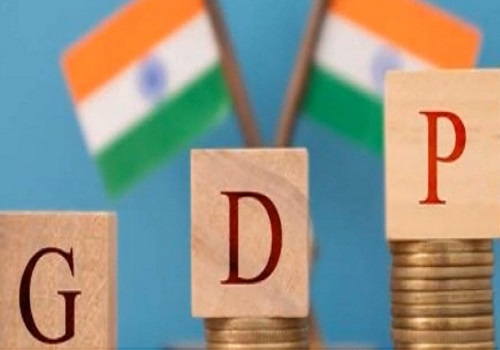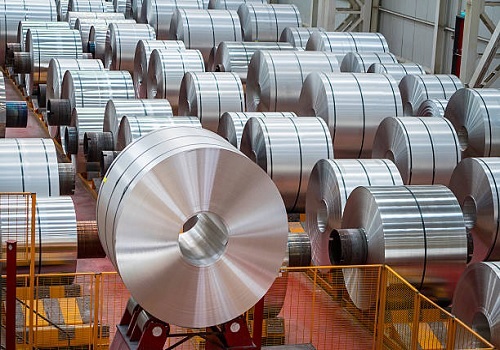India`s S&P Rating Upgrade by Franklin Templeton India

S&P’s decision sends strong signals to investors, global markets, and policymakers alike. But what does this mean for India’s economy in practical terms, and how will equity and fixed income markets react in the wake of this significant development?
Impact on the Indian Economy
S&P’s upgrade of India’s sovereign rating indicates recognition of the country’s fiscal discipline and economic growth. The upgrade is based on S&P’s assessment of India’s approach to managing deficits, inflation, and economic expansion besides its view of India’s external position, citing foreign exchange reserves and limited reliance on trade. The change comes during global market volatility and may positively affect investor confidence, capital inflows, and borrowing costs.
S&P’s view that a potential 50% tariff from the U.S. would have a marginal impact further supports the notion that the Indian economy is resilient and welldiversified.
The government has set a goal to decrease the general government deficit to 7.3% of GDP by FY26, compared to a peak of 13.4% after the pandemic. India’s debt-toGDP ratio decreased from 88.4% in 2020 to 80.4% in 2025 and is projected to decline to 75.8% by 2030, contrasting with an increasing global average.
Country-wise S&P Global Credit Rating

Real GDP growth averaged 8.8% from FY22 to FY24 within the Asia-Pacific region, supported primarily by public investment in infrastructure. The revised rating could lower external borrowing costs for both the government and private sector, which may affect the availability of capital for investments and positively impact economic growth.
Equity Markets: What Lies Beyond?
For equity markets, a ratings upgrade is an added tailwind, which could prove beneficial for improving sentiment overnight. While India’s growth story is gaining appreciation, the ratings upgrade could help companies gain access to cheaper capital to further spur growth. India’s cost of debt as reflected by the 10-year yield has been compressing. The upgrade indicates that S&P believes that this can be more structural. The implications could prompt increased foreign interest, as global funds with mandates to invest only in investmentgrade economies can now allocate funds more readily to India. In the longer run, the upgrade may accelerate inflows from foreign investors and catalyze capital formation, particularly in high-growth sectors.
Large-cap companies, especially those with international borrowing needs, could be the early beneficiaries with the financial sector, infrastructure, and interest-rate sensitive stocks set to benefit most. The upgrade also validates the long-term risk-reward dynamics for domestic and international investors, with India now seen as a more stable and lower-risk proposition
Sectoral Winners
The upgrade is likely to benefit certain sectors disproportionately. Infrastructure projects, both public and private, may gain from easier access to capital.
Banks and financial institutions could see improved credit profiles and expanded investor bases, supporting lending and financial intermediation. Power and renewable energy companies, capital-intensive manufacturers, and exporters could stand to access cheaper funding and attract more foreign partnerships. Even IT and technology firms may find it easier to woo international clients and investors, thanks to greater confidence in India’s macroeconomic stability.
Market Volatility and The Path Forward
While the initial reaction is positive, equity markets are complex ecosystems. Profit-taking, shifts in global risk appetite, or tactical adjustments might introduce volatility. Moreover, the sustainability of this momentum depends on the government’s ability to maintain fiscal discipline and deliver on reform promises. Should economic growth falter or policy credibility waver, markets may react swiftly and sharply—potentially reversing recent gains and reigniting risk premiums.
Fixed Income Markets: Lower Yields, Deeper Pools
India’s 10-year government bond yields declined by up to 10 basis points following the upgrade, reflecting increased demand and perceptions of reduced risk. Corporates and financial issuers now anticipate a reduction of 10–20 basis points on external borrowing, potentially allowing broader access to lower-cost funding.
Non-banking financial companies (NBFCs), which often depend on credit ratings to access global capital, may experience the most significant reductions, with some possibly saving up to 40 basis points in funding costs. As borrowing becomes less expensive, companies could refinance debt on revised terms, allocate resources for expansion, and pursue additional activities.
The upgrade may contribute to stability in the fixed income market, with potential increases in both depth and liquidity. There is a possibility that Indian government bonds could be included in more global indices, which may expand the investor base. A wider pool of domestic and international investors could facilitate market operations, help moderate volatility, and support price discovery. These dynamics may lead to enhanced ratings, additional capital inflows, improved market liquidity, reduced costs, and greater economic resilience
The fixed income market continues to face risks. If fiscal deficit targets are not met or reform momentum weakens, risk premiums may rise, and yields could increase. The persistence of these changes is dependent on macroeconomic management and the ability to sustain policy discipline.
Conclusion: A Landmark Upgrade, But No Room for Complacency
India’s upgrade to BBB by S&P Global Ratings is both a recognition and a challenge. Equity and fixed income markets have already responded, with rallies and lower yields signaling growing confidence in India’s prospects. Yet, these gains will only be sustained if the government continues to deliver on its reform agenda, maintains fiscal discipline, and cultivates robust, broad-based economic growth. The risk of complacency is real – slowdowns, policy reversals, or fiscal indiscipline could quickly undermine the progress made.
In essence, the S&P upgrade is India’s invitation to join the ranks of the world’s leading economies – not just in rating, but in substance. The road ahead will require vigilance, innovation, and steadfast commitment to reform. Should India remain on this path, the benefits – lower costs, higher growth, and greater global standing – will accrue for years to come, marking this moment as a genuine new dawn for its economy and markets.
Above views are of the author and not of the website kindly read disclaimer





















